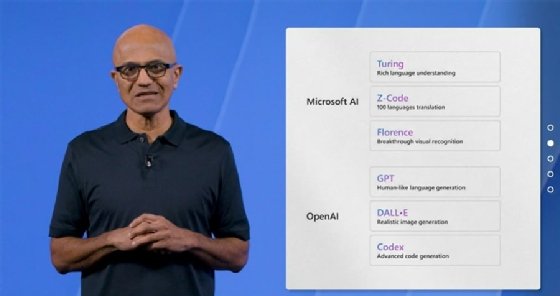
Getty Images/iStockphoto
New Microsoft AI tools aim at business end users
Microsoft released new features for the Azure Cognitive Services suite, as well as a Form Recognizer and Responsible AI dashboard aimed at both data scientists and business users.
Microsoft released new AI tools and capabilities aimed at business users as well as developers and data scientists.
As it opened its Microsoft Ignite user conference on Wednesday, the tech giant introduced several updates to its Azure Cognitive Services, notably limited access in preview to Open AI's Dall-E 2, the latest version of the large text-to-image model. Microsoft also unveiled new Azure Machine Learning capabilities including a dashboard that enables users to implement Microsoft Responsible AI principles.
Microsoft also added AI features to its Project Bonsai -- a low-code industrial AI development platform currently in preview. Project Bonsai enables enterprises to create AI-powered automations without the need for advanced data science skills.
Turning to business users
With the introduction of these new tools and capabilities, Microsoft, as well as its rival Google with its own product releases at Google Cloud Next on Oct. 11, is mirroring a shift that's occurring in the AI market toward business end users, according to Alan Pelz-Sharpe, founder and analyst at Deep Analysis.
In the last few years, Microsoft, Google and others have steadily advanced AI technology with new systems that show the power of AI. However, they have largely failed to show business users how those tools can apply in their day-to-day jobs, Pelz-Sharpe said.
"There's a recognition now with the big cloud companies that if it doesn't connect into those workflows that bring actual business value, then nobody's going to use it," he said.
Business users want to know how the AI tools connect to applications such as chatbots and customer support tasks and processes. While data scientists have been impressed with the new tools of recent years, business users have not been sure what to make of them.
The focus now for Microsoft is not only making its capabilities explainable as with the new Responsible AI dashboard, but also enabling more no-code, low-code workflows, Pelz-Sharpe added.
"So that this stuff gets used in business as opposed to being the star itself," he said.
Microsoft is also focusing on making its AI tools easier to use for customers who use its other business software products such as Microsoft Dynamics and Microsoft 365.
One new system the vendor rolled out for this is Microsoft Syntex, a new set of apps and services that use AI to organize large amounts of content such as business contracts. Syntex also automates content-based workflows and can be easily integrated into Microsoft 365 and the Dynamics 365 CRM system.
Combining capabilities
Meanwhile, although Microsoft is appealing to business users, the vendor and its peers need to better understand how some of these tools can work together, said Sid Nag, an analyst at Gartner.
"A lot of these cloud providers are building what I call ingredients," Nag said. "But they're not really showing customers what the recipe is and how to use various ingredients. I think that's missing from all these cloud providers' announcements."
While Microsoft has numerous AI tools aimed at different work roles, it and other big vendors of AI technology have largely fallen short of showing how to use the plethora of tools together to serve business goals, Nag said.
For example Microsoft's computer vision feature in Azure Cognitive Services is specialized for image analysis and geared toward IT leaders who are familiar with edge analysis, while other tools in the suite serve business users in various environments, including customer service.
"They're democratizing a lot of these services by bringing them closer to the business buyers who have traditionally been overwhelmed by technology," he said. However, after the features are offered, "you have to show them how to use these features in a combinatory fashion rather than discrete manner," he said.
Theory versus implementation
Even if AI technology is accessible, implementing some of the AI systems from the cloud providers is not so simple, said Yugal Joshi, an analyst at Everest Group.
While cloud vendors tend to position their tools as easy to use, it takes time to implement them, especially without the right data, engineering and development competence, he said.
"Technically many of the solutions may not be mature enough," Joshi said.

Some Microsoft AI tools that may be relatively simple to implement are the new capabilities, available in preview, in Azure Form Recognizer, a robotic process automation-like system that extracts content unique to contracts such as payment terms, according to Joshi.
"It is not as glamorous as some other use cases," Joshi said, but added that it's an area in which enterprises are spending a lot of money and time.
"My gut sense is it will be more ready than some of the other things because I think this is still simpler to do than some of the other stuff around, let's say, Dall-E," he added.






